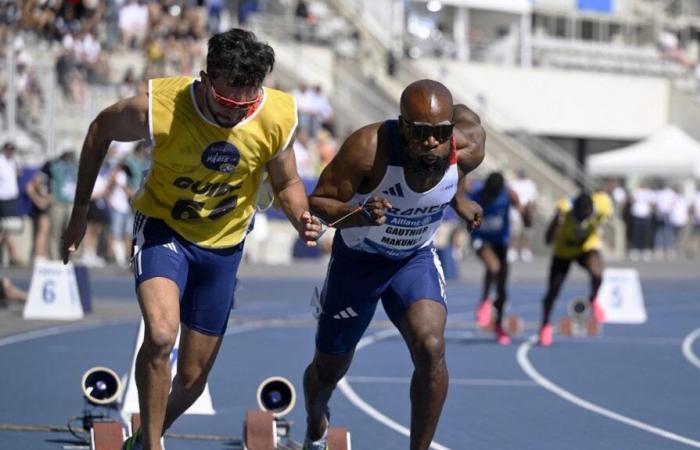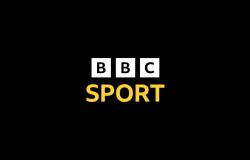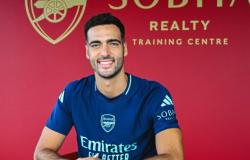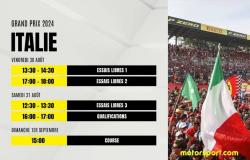In para-athletics, paratriathlon and paracycling, visually impaired athletes are systematically assisted by a guide during their event.
“A Formula 1 driver, we talk to him about his car. A para-athlete, we talk to him about his guide: it’s the same,” summarizes Gautier Simounet, head of guides for the French para-athletics team, and himself a former guide. “We have seven guides in the French athletics team. They are able-bodied athletes who assist visually impaired athletes during the event, but also outside of it.”Guardian angels who are also found in paratriathlon and paracycling, and whose status is finally evolving.
“It’s important to talk about them“, insists Trésor Makunda, a sprinter who won five medals at the Games. “For a long time we fought to have one guide per athlete, today we have almost two each. It was a battle led by the staff to put us in the best conditions”. Gold medalist in Beijing and London guiding Assia El Hannouni, Gautier Simounet was responsible for finding these precious reinforcements and training “cthe new guides who do not yet have a history with disabled sport, Paralympism, to teach them what is expected of them outside of performance.”
In concrete terms, the guide (or assistant) competes in the event alongside his para-athlete. In running, they are connected by silicone rings held in the hand, and run in mirror image, explains Gautier Simounet: “From the starting blocks, we have to be the opposite: if the athlete puts his left leg in front, the guide puts his right. The guide also speaks during the race, to situate the athlete, to talk about strategy. We have codes to be concise.”
“There is also non-verbal communication with the arm, which serves as a rudder, if you pull on the athlete’s arm.”
Gautier Simounet, head of para-athletics guidesto franceinfo: sport
Another rule in athletics: the para-athlete must cross the line first, no matter what, while the guide must not pull on the rope or bite into the lanes. In paracycling, the duo is on a tandem piloted by the guide, at the front. “My guide, Yoann, describes to me what he sees, warns me when I need to change position, get into a dancing position. He is my eyes. We make decisions together, then, if we need to attack“, says Alexandre Lloveras, Paralympic time trial champion.

In triathlon, the principle is the same, with a link at the thighs or hips. “The same guide does the whole raceexplains Nicolas Becker, coach of the French paratriathlon team. The guide must not be a hindrance to the athlete, and therefore must be slightly better so that the athlete expresses himself 100%. But he must also encourage, accompany, command, warn of dangers, and help during transitions.”
Recruited by word of mouth, classified ads or coincidences, guides must above all have a high sporting level. “We have a lot of guides who are former Olympic athletes”Nicolas Becker points out. But physical appearance is not everything in this role, which is above all highly human. Alexandre Lloveras has thus changed guides several times in recent seasons, for both sporting and human reasons.
“With my previous guide, it worked very well on the track at the Glasgow Worlds but we were too far on the road. We made a strategic sporting choice by taking a stronger guide on the road…”
Alexandre Lloveras, Paralympic cycling championto franceinfo: sport
His new guide is Yoann Paillot, a former second-tier professional cyclist, who was about to hang up his bike when he was contacted by the French paracycling team. “I had never tried tandem, I was fed up with the high level, and from the first training camp in Roubaix, I liked it”says Yoann Paillot, despite a fall on the wet Roubaix road during this training course last winter. An incident that did not undermine the trust between the new guide and Alexandre Lloverras.
“We’ve spent almost every other week together since January. If we don’t get along well, it can be long and you can feel it on the bike afterwards. It’s already happened that when riding tandems, teams have stopped on the side of the road to hit each other.”
Alexandre Lloveras, Paralympic para-cycling championto franceinfo: sport
“If we don’t say anything to each other, if we only talk in the bedroom and on the bike, we feel it in terms of cohesion. It’s already a team sport, but even more so since there are two of us on the same bike. We have to be in sync all day long.”adds Yoann, responsible for example for carrying Alexandre’s tray to the canteen or helping him find his bearings each time he changes location.
“In a new building, it will take a day or two for an able-bodied person to get their bearings. For the visually impaired, this adaptation time must be multiplied by three. Outside of competitions, guides are extra hands and eyesexplains Gautier Simounet. We run for someone, not for ourselves anymore, we have to put our ego aside. We need sporting qualities yes, but human qualities above all.“
“There’s no saying that Usain Bolt would have been a good guide, because running fast is not enough. That’s the basis, but the human side is super important, off the track, to create this trust between pairs, to help the athlete in the small everyday gestures.”
Gautier Simounet, head of guides for the French para-athletics teamto franceinfo: sport
“Being a guide means being there, even in the silences. During competitions, they share their room, which is best for cohesion, apart from mixed pairs, obviously.adds Gautier Simounet. Sometimes there are several people around the duo so that the guide can have some breathing space too. We can’t ask them for everything either, because the level is so high today, that the guides need to do their shopping at full speed too. They can’t afford to be at 90%.”adds Nicolas Becker.
This personal investment by the guides is all the more important as it is often voluntary, even if the situation improves year after year. “In 2008, when I told my family that I was going to be a guide in Beijing, my cousin asked me how I knew the city so well. He thought I would be a tour guidesmiles Gautier Simounet. Now, the guides have the same high-level status as their athlete, and the same level of financial recognition in case of medals. Moreover, since 2012, they receive a medal.”
The same goes for sponsorship, since equipment manufacturers now dress guides. Which was not the case for example for Gautier Simounet in 2008 in Beijing, flanked by a famous American brand in his own right, alongside his athlete, the muse of a German brand with three stripes. A detail for the latter for whom being a guide enriches in ways other than money.
“I have had some crazy, human and sporting experiences thanks to disabled sport. I joined the French disabled sports team with athletes with different disabilities and backgrounds, who put life into perspective.”
Gautier Simounetto franceinfo: sport
“I have travelled the world thanks to competitions, met lots of people, cultures, I have grown thanks to all of that. I have even been awarded the Legion of Honour and the National Order of Merit medal. I have run in stadiums with 80,000 people. I would never have experienced all of these things without disabled sport.”concludes Gautier Simounet, who hopes to see new guides knocking on the doors of clubs at the start of the school year: “But that will depend on the performance of our para-athletes…”






